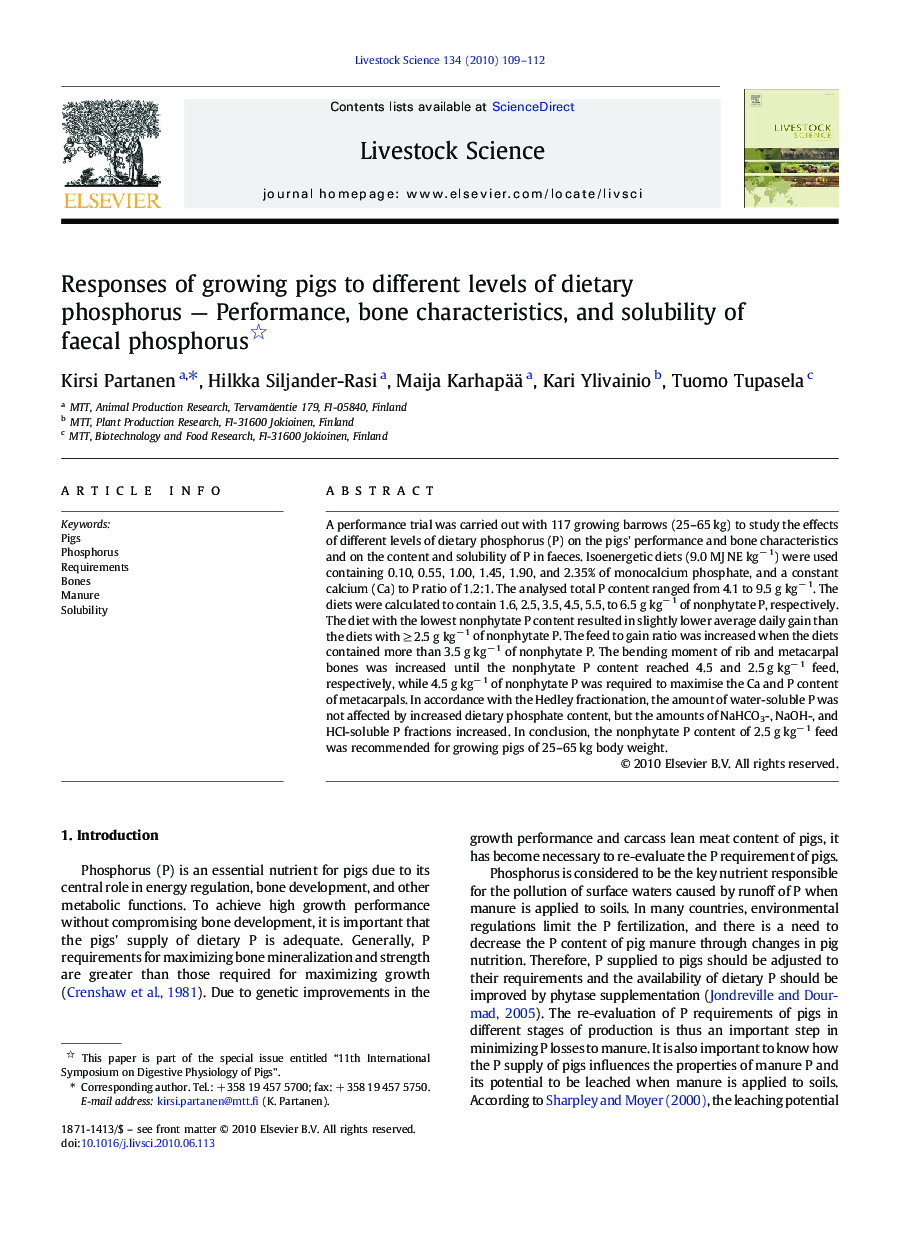| کد مقاله | کد نشریه | سال انتشار | مقاله انگلیسی | نسخه تمام متن |
|---|---|---|---|---|
| 2447609 | 1553998 | 2010 | 4 صفحه PDF | دانلود رایگان |

A performance trial was carried out with 117 growing barrows (25–65 kg) to study the effects of different levels of dietary phosphorus (P) on the pigs' performance and bone characteristics and on the content and solubility of P in faeces. Isoenergetic diets (9.0 MJ NE kg− 1) were used containing 0.10, 0.55, 1.00, 1.45, 1.90, and 2.35% of monocalcium phosphate, and a constant calcium (Ca) to P ratio of 1.2:1. The analysed total P content ranged from 4.1 to 9.5 g kg− 1. The diets were calculated to contain 1.6, 2.5, 3.5, 4.5, 5.5, to 6.5 g kg− 1 of nonphytate P, respectively. The diet with the lowest nonphytate P content resulted in slightly lower average daily gain than the diets with ≥ 2.5 g kg− 1 of nonphytate P. The feed to gain ratio was increased when the diets contained more than 3.5 g kg− 1 of nonphytate P. The bending moment of rib and metacarpal bones was increased until the nonphytate P content reached 4.5 and 2.5 g kg− 1 feed, respectively, while 4.5 g kg− 1 of nonphytate P was required to maximise the Ca and P content of metacarpals. In accordance with the Hedley fractionation, the amount of water-soluble P was not affected by increased dietary phosphate content, but the amounts of NaHCO3-, NaOH-, and HCl-soluble P fractions increased. In conclusion, the nonphytate P content of 2.5 g kg− 1 feed was recommended for growing pigs of 25–65 kg body weight.
Journal: Livestock Science - Volume 134, Issues 1–3, September 2010, Pages 109–112